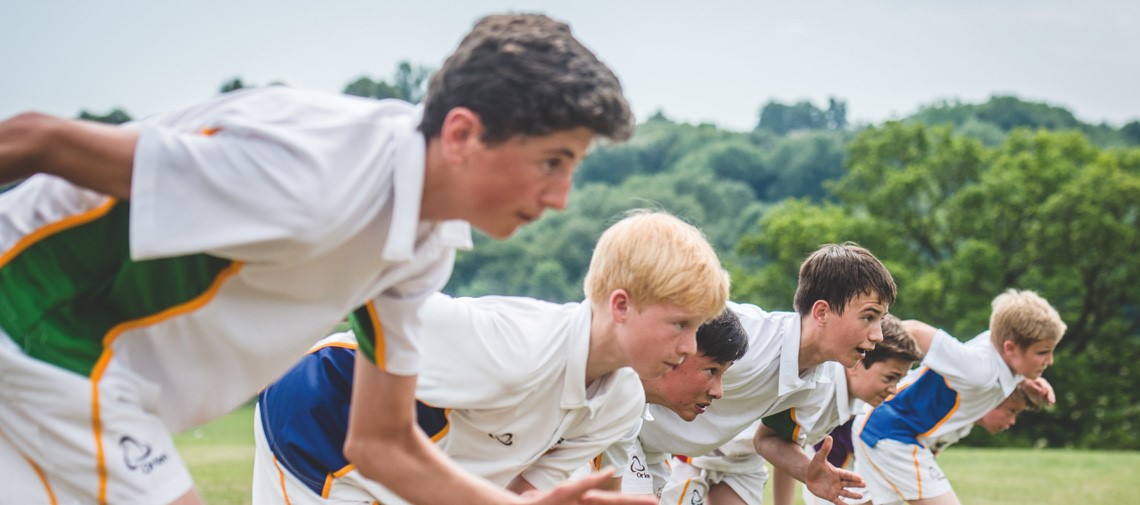Read how one boys’ secondary school Beechen Cliff achieved this incredible amount

Beechen Cliff is a boys’ secondary school with a co-educational sixth form. Many students struggled during the lockdown periods – a lot of the older boys, for example, had previously used sport to relieve their stress, but with no sport going on there was no way to release it. Roughly 10% of the parent body got in touch with the school regarding mental health services.
After speaking to the school to find out where the greatest need was, the PTA started a fundraising campaign with three distinct aims. Supporting mental health was a priority. We also wanted to raise money for laptops for online learning, and fund improvements to the school clubhouse. (The PTA had previously raised enough money to build the clubhouse by holding an ‘auction of promises’, and it was completed in February 2020.)
As part of the new campaign, we wanted to raise funds to add running water, electricity and a kitchen. This would allow students to make better use of the clubhouse – for instance, to host teas after rugby and hockey games. Located next to our tennis courts, the clubhouse is not just for sport, it’s a multipurpose venue.
To launch our fundraising campaign, we set up a page through the InvestMyCommunity online platform – they approached us as they’re locally based, and some of their staff had children at Beechen Cliff. We outlined our fundraising goals on the IMC page, and sent the link out to parents on a weekly basis. It was really encouraging to see the total increase every week. InvestMyCommunity is now known as GoodHub.
I come from a sales background so I was very proactive in extending the reach of our campaign. There are some quite well-known sports people with past connections to the school, so I contacted them and they agreed to help promote the campaign. I also got in touch with various Facebook groups for different local areas here in Bath. Then I spoke to The Bath Magazine, which ran an article about us.
I got in contact with a local printer, who kindly produced 5,000 A5 leaflets and 20 laminated A3 colour posters for free. The posters displayed our QR code and I put them up on trees, in the local supermarket, on walls, and all over the area. People could scan the QR code and it would take them to our IMC page, where they could see what we were raising money for.
During the February half-term of 2021, we asked the students to help us deliver leaflets, as we felt this would give them something to work together on to support each other and their school. A group of them (along with some of their sisters, who go to Hayesfield Girls’ School) went out delivering. As with the posters, the leaflets featured our QR code and the details of what we were fundraising for.
Our total just went up and up, and in a month we had raised £20,000! Around £7,000 of this was put towards improving mental health, training around 150 teachers in a solution-focused mental health programme. Very simply, this encourages students to look at what things make them happy, so they can focus on doing more of those. If the pupils are having a bit of a tough time, teachers can share this technique with them to help them have a better day. The money also paid for an additional day a week for children to have access to counselling.
In the end, we didn’t need to buy the laptops as by the time the funds came in there had been a shift from online learning back to the classroom, and also because several local businesses had generously donated laptops. Instead, we consulted with the headmaster and diverted those funds to the purchase of a state-of-the-art 3D printer. We were also able to spend money on learning support for our SEN pupils and we renovated one of their classrooms.
And with the rest, we’ve finished off the clubhouse, which has acted as a satellite canteen to feed 400 pupils a day so that social distancing could be maintained.
The PTA also use it for second-hand uniform sales which, aside from offering a positive uniform recycling opportunity, bring in an annual revenue of up to £4,000, helping support the school on items not supported by statutory funding.
There were some lovely comments alongside people’s donations, about how amazing the school and the teachers are. I compiled this feedback into an email which I sent to the teachers, saying: ‘This is how much your efforts are appreciated.’ It gave them a real boost during an extremely tough time.
- Marina Beare, PTA chair, Beechen Cliff School, Bath (1,300 pupils)
How to use QR codes
Quick Response (QR) codes are an easy way for people to interact with your campaign. They’re simple to generate online and can be put wherever you’re promoting your fundraiser, whether that’s a poster, leaflet or sign. Holding a smartphone over the code directs users to your fundraising website. They’re particularly useful when space is at a premium – you might not have much room on a noticeboard or flyer, but a QR code can link to your website with all your campaign information. With more and more people relying on cards rather than carrying cash, a QR code printed on a sheet of A4 and stuck to a donation bucket is also a great way to make up for the loss of small change.
Further reading
Sign up to FundEd to access grants and funding support

